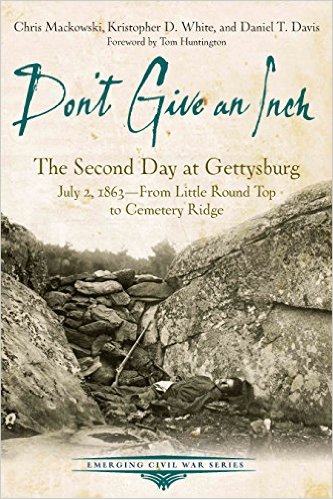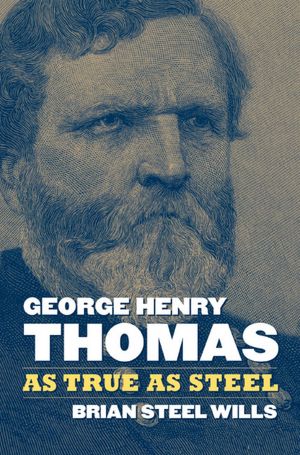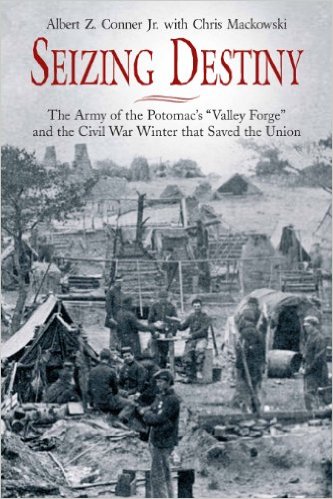History is replete with heart-rending stories of star-crossed lovers. Marc Anthony and Cleopatra, Queen Elizabeth and the Earl of Essex, Admiral Horatio Nelson and Lady Emma Hamilton, General John Reynolds and Kate Hewitt. Wait. Who? Unless you’re a reader of Jeffrey Harding’s dual biography or a distant relation of Kate Hewitt, the last couple mentioned is probably unknown to you. The subject of Harding’s book is a romance lost for almost 154 years. The question remains: is uncovering this story of unrequited love important to the historical record, and why should a Civil War student care about it?
The answer to the second part of the question may well depend on how you feel about the first. General John Fulton Reynolds is a name familiar to students of the Civil War. His death at age forty-two on the first day of the Battle of Gettysburg certainly cut short a promising military career—and perhaps a distinguished postwar life. Reynolds came from a prominent military family and was an 1841 graduate of West Point. Harding makes it a point to mention his “uniquely designed class ring that featured his class motto—Dinna Forget.” After early postings with the 3rd U.S. Artillery at Forts McHenry and Moultrie, he joined General Zachery Taylor’s army in Texas and was breveted twice during the 1846-48 war with Mexico. He was brevetted to captain for gallantry at Monterrey, then to major at Buena Vista, where his section of guns prevented the Mexican cavalry from outflanking the American left. July 1861 found Reynolds in California with orders to report to West Point as commandant of the Cadet Corps. He embarked on the SS Golden Age out of San Francisco, bound for New York.
This part of the story Harding tells with verve and a keen eye for descriptive detail. Reynolds is the subject of two competent biographies and a recent article. In addition, Harding deftly uses the Reynolds Family Papers and his Participant Account File at the Gettysburg National Military Park to paint a comprehensive portrait of a rising star in the United States Army. Reynolds’ distinguished record in the signature battles of the Army of the Potomac and his untimely death at the most documented engagement of the Civil War supplies Harding with a treasure trove of personal and professional information with which to flesh out Reynolds’s eventful life.
Then there’s Catherine May Hewitt. Her footprint in the historical record is decidedly smaller. Her family was not famous, no family letters seem to have survived, and secondary sources are few and often unreliable. Harding, therefore, makes use of an expert genealogist, Mary Stanford Pitkin, to unseal many of the mysteries and tie up historical loose ends surrounding the life of the other half of this star-crossed couple.
Harding sets an ambitious agenda by endeavoring to answer myriad questions associated with Hewitt’s life beyond her relationship with Reynolds. Where did Kate really come from? Why did she relocate to California? How did Kate meet John, and how did she come by his unique class ring? What became of her after he died? Even the location of her exact burial site is uncertain. Perhaps most importantly, Harding further contends that Kate’s life experiences “offer unique insights into the struggles of a single woman left to fend for herself in mid-nineteenth-century America.” For Harding, their story “brings together heroism, tragedy, sacrifice, mystery, sense of loss, and perseverance.”
After finishing Harding’s dual biography, readers will have sufficient material to answer if the Reynolds-Hewitt relationship, however brief, contributes something of importance to the historical record and, specifically, how that relationship did or did not affect Reynold’s life and his conduct as a soldier during the Civil War. The History Press is to be commended for including numerous photographs and illustrations that add a human dimension and sense of place to Harding’s book.
John Fulton Reynolds’ legacy has long been set in stone; his impressive equestrian statue is the first stop on the Gettysburg battlefield auto tour. Kate Hewitt now has her story memorialized in the pages of Jeffrey Harding’s book.
Gordon Berg writes from Maryland. He has published numerous articles, reviews, and essays in Civil War magazines.





